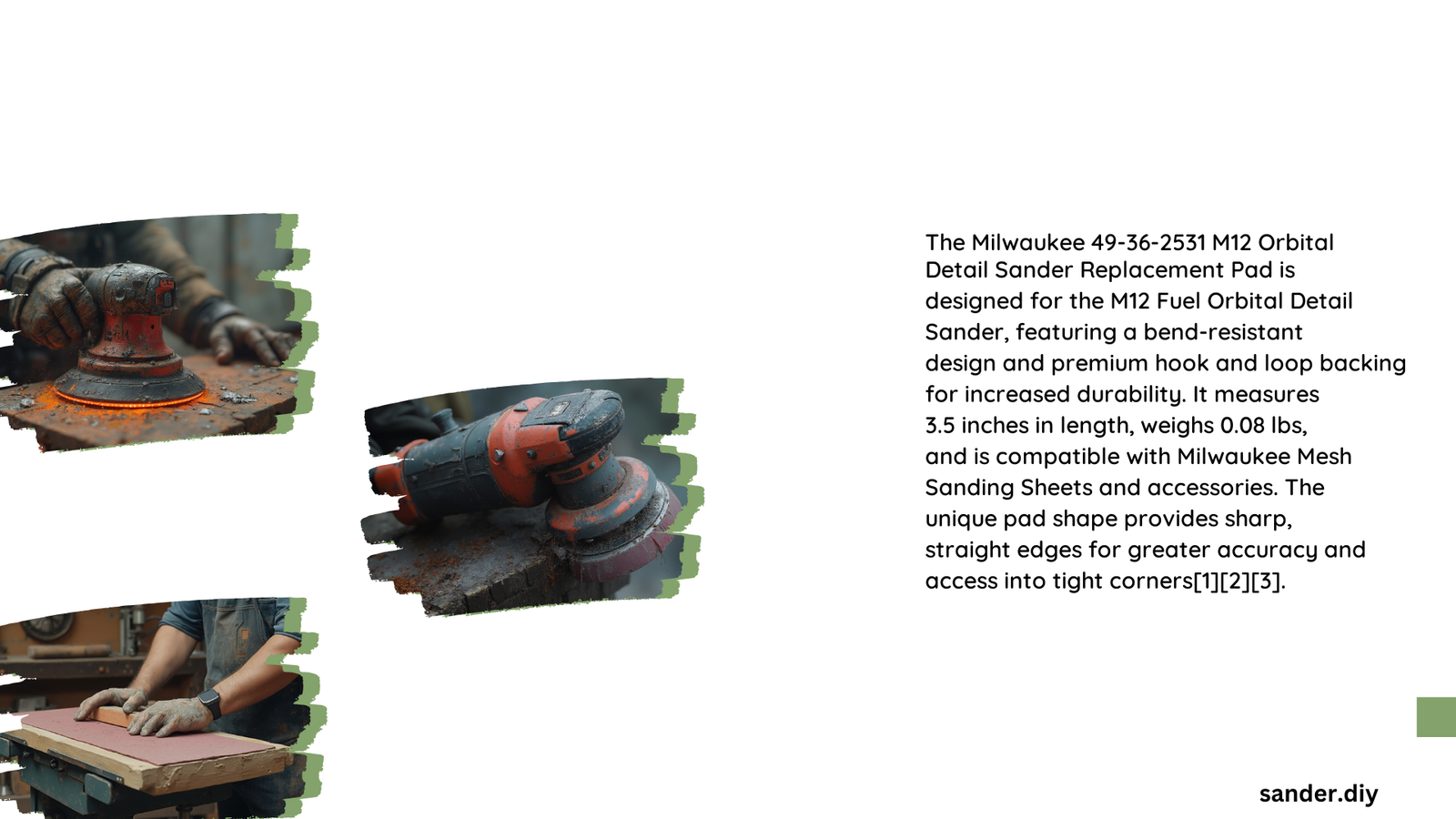Detail sander replacement heads are essential components for maintaining and optimizing the performance of detail sanders. These specialized pads come in various shapes and sizes, designed to fit specific sander models and provide efficient sanding in tight corners and hard-to-reach areas. Understanding the types, materials, installation process, and compatibility factors of detail sander replacement heads is crucial for achieving optimal results in your sanding projects.
What are the Different Types of Detail Sander Replacement Heads?
Detail sander replacement heads come in various types, each designed for specific sander models and applications. Here are some common types:
- Milwaukee M12 Orbital Detail Sander Replacement Pad
- Dimensions: 3.5\” x 2.6\” x 0.4\”
- Weight: 0.08 lbs
- Unique shape with sharp, straight edges
-
Compatible with Milwaukee M12 Fuel Orbital Detail Sander (2531-20)
-
Bosch Detail Sander Pads
- Often proprietary designs
-
Example: 6-inch round sanding pad for Bosch ROS20VSC
-
Makita Detail Sander Pads
- Typically rectangular
-
Model-specific designs
-
Black & Decker Detail Sander Pads
- Square or rectangular shapes
- Compatible with specific Black & Decker models
What Materials are Best for Detail Sander Replacement Heads?

The choice of materials for detail sander replacement heads significantly impacts their performance and durability. Here are the key materials and features:
- Hook and Loop Backing
- Provides easy attachment and removal of sanding sheets
-
Increases overall durability of the pad
-
Plastic Base
- Offers a bend-resistant structure
-
Ensures consistent performance across various materials
-
Grit Compatibility
- Pads are designed to work with a range of grit options
- Allows for versatility in sanding applications
| Material Feature | Benefit |
|---|---|
| Hook and Loop Backing | Easy sheet attachment and removal |
| Plastic Base | Bend-resistant and durable |
| Grit Compatibility | Versatile sanding applications |
How to Install a Detail Sander Replacement Head?
Installing a detail sander replacement head is generally a straightforward process. Follow these steps for a successful installation:
- Remove the Old Pad
- Gently pull the old sanding pad away from the sander
-
Use a screwdriver if the old pad is stuck
-
Inspect the Sander Surface
-
Ensure the surface is clean and free of debris
-
Attach the New Pad
- Align the new sanding pad with the sander’s surface
-
Press firmly to secure the hook and loop backing
-
Test the Fit
- Turn on the sander to ensure proper attachment and function
Time Estimate: The installation process typically takes only a few minutes.
Common Challenges:
– Ensuring a clean surface for proper adhesion
– Correct alignment to prevent uneven wear
What are the Compatibility Factors for Detail Sander Replacement Heads?
Compatibility is crucial when selecting a detail sander replacement head. Consider the following factors:
- Specific Model Numbers
-
Example: Milwaukee 49-36-2531 M12 Orbital Detail Sander Pad is designed for the Milwaukee M12 Fuel Orbital Detail Sander (2531-20)
-
Manufacturer Recommendations
- Always use replacement pads recommended by the sander manufacturer
-
Example: Use Milwaukee POWERGRID Mesh Sanding Sheets with the Milwaukee M12 Orbital Detail Sander Pad
-
Dimensions and Shape
- Ensure the replacement head matches the original pad’s dimensions and shape
-
Some models have unique shapes for specific applications
-
Attachment Mechanism
- Most modern detail sanders use hook and loop systems
- Older models might require different attachment methods
By considering these factors, you can ensure optimal performance and longevity of your detail sander.
What are the Performance Metrics of Detail Sander Replacement Heads?
Understanding the performance metrics of detail sander replacement heads can help you choose the right one for your needs:
- Durability
- Look for bend-resistant designs
-
Premium hook and loop backing enhances longevity
-
Lifespan
- Varies depending on usage and materials sanded
-
High-quality pads can last for several projects
-
Heat Resistance
- Important for prolonged use
-
Specific ratings are not always provided, but jobsite-grade materials are typically heat-resistant
-
Vibration Dampening
- Some replacement heads offer improved vibration control
-
Enhances user comfort during extended use
-
Dust Collection Efficiency
- Some pads are designed with improved dust collection features
- Contributes to a cleaner work environment
By considering these performance metrics, you can select a detail sander replacement head that meets your specific needs and ensures optimal sanding results.
